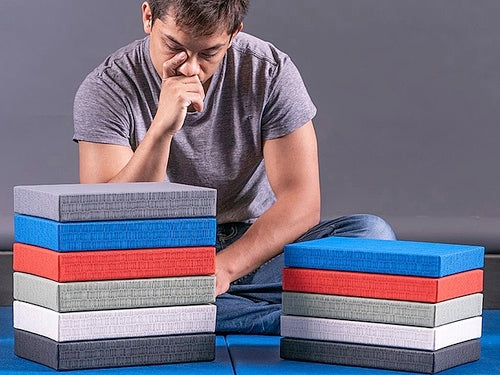
Fuji Tatami & Smooth Series Mats vs. Roll Out Mats: Choosing the Right Option for Your Gym

The Difference Between Fuji Tatami & Smooth Series Mats vs. Roll Out Mats: A Guide for Buyers
When selecting the right mats for your gym, dojo, or training space, it's essential to weigh your options carefully. Among the top choices are Fuji Tatami & Smooth Series Mats and Roll Out Mats—both offering distinct features that can significantly impact your training environment. To help you make an informed decision, let’s break down the key differences between these two mat types, focusing on cushioning, durability, weight, and material.
Cushioning and Density
One of the most important aspects to consider is the cushioning provided by the mats. Fuji Tatami & Smooth Series Mats have a density rating of 220-240 kg/m³, offering superior shock absorption and impact protection. This high-density foam ensures better protection for athletes, reducing the risk of injury during throws, takedowns, or ground-based training.
In comparison, Roll Out Mats have a density rating of 100-110 kg/m³, which provides less cushioning. While Roll Out Mats may be lighter and more portable, the reduced density makes them less suitable for high-impact training sessions where safety and comfort are critical.
Durability and Warranty
When investing in mats, durability is crucial. Fuji Tatami & Smooth Series Mats come with a 5-year limited warranty, ensuring long-lasting performance even under intense use. These mats are designed to withstand the rigors of daily training in combat sports like Brazilian Jiu-Jitsu, Judo, and MMA, making them a reliable choice for serious practitioners and gym owners.
On the other hand, Roll Out Mats typically offer a 6-month limited warranty, reflecting their more temporary nature. These mats are better suited for short-term use or less demanding environments, where wear and tear may not be as significant a concern.
Weight and Stability
Weight plays a significant role in the mat's stability and ease of use. Fuji Tatami & Smooth Series Mats weigh 10 kg per square meter, providing a solid, stable foundation that won’t shift easily during training sessions. This added weight contributes to a safer training environment, as the mats remain in place even during intense grappling or sparring.
In contrast, Roll Out Mats are significantly lighter, weighing 3.5 kg per square meter. While their lightweight nature makes them easy to transport and set up, it also means they may move around more during use, which could be a concern for high-energy martial arts or fitness activities.
Surface Type
Both mat options offer the choice between Tatami and Smooth surfaces, allowing you to tailor your mats to the specific needs of your sport. Tatami surfaces provide a textured, traditional feel ideal for martial arts, while smooth surfaces are great for general fitness or no-gi training.
Material: Reconstituted Foam vs. XPE Foam
The core material of the mats also plays a crucial role in performance. Fuji Tatami & Smooth Series Mats use reconstituted foam, which is durable, eco-friendly, and offers excellent shock absorption. This material is known for its long lifespan and superior cushioning properties.
Roll Out Mats, on the other hand, are made from XPE foam, which is lighter and less dense. While it provides some cushioning, it does not match the long-term durability and impact protection of reconstituted foam.
Which Should You Choose?
When deciding between Fuji Tatami & Smooth Series Mats and Roll Out Mats, consider the following:
-
For long-term use and heavy-duty training environments, Fuji Tatami & Smooth Series Mats are the better investment. Their superior cushioning, durability, and stability make them ideal for combat sports gyms or dojos that need to prioritise safety and performance.
-
For portability and short-term use, Roll Out Mats may be more convenient. If you need mats that are easy to transport or set up temporarily, Roll Out Mats could be the right choice, especially for casual training or events.
By weighing these key factors, you can choose the mats that best meet your training needs, ensuring a safer and more efficient workout space. Whether you’re outfitting a dojo or gym, selecting the right mats can make all the difference in creating a professional environment where athletes can train safely and effectively.





